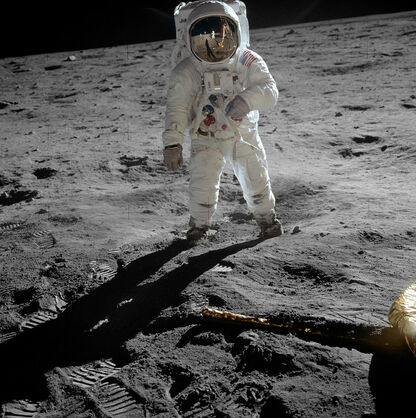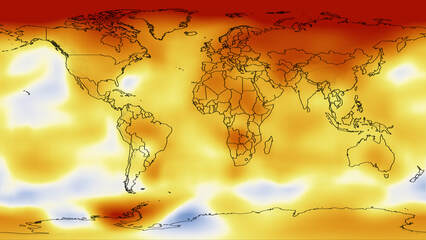|
3/24/2019 Conspiracy Theorists: How to Tell the Difference between reasonable and Irrational SkepticsRead Now Terrorist attack the World Trade Center Towers Terrorist attack the World Trade Center Towers There are a lot of conspiracies out there nowadays, and many of them include scientists as the “evil guys”. Some conspiracy theorists argue that climate change isn’t real, and it’s all doctored or exaggerated data generated by scientists promoted by research funding agencies and green companies. Others argue that vaccination produces autism, and that scientists and pharmaceutical companies are trying to hide this fact. Still others argue that scientists are hiding evidence for a young Earth and the discovery of Noah’s Ark because this would confirm creationism. There are also those conspiracy theorists that state that the scientists that carried out the analyses of the destruction of the Word Trade Center by terrorist during 911 engaged in faking data and misdirection to hide the fact that the attacks were a false flag operation staged by the US government to justify the invasion of Afghanistan and Iraq. And there are even some who argue that the Earth is really flat, that the moon landing never happened, and that pictures of a round Earth are fake. It is tempting to roll our eyes and dismiss these conspiracy theorists as ignorant, but when you check the social media accounts of these characters and read the debates in which they become involved in public forums, you find that many of them are quite knowledgeable individuals. In fact some believers in conspiracy theories are, or have been, eminent scientists!  Apollo 11 astronaut Buzz Aldrin on the Moon Apollo 11 astronaut Buzz Aldrin on the Moon Conspiracy theorists and scientists share the fact that they are both skeptics, and skepticism is a healthy attitude in science. There is nothing wrong in being a skeptic, and truth be told, conspiracies should not be dismissed outright either as there have been a number of documented conspiracies. But many would argue that when it comes to some of the conspiracy theories outlined at the beginning of this post, conspiracy theorists are going too far in their skepticism and are not behaving like true scientists. So how do we differentiate between the reasonable skeptics and the irrational skeptics? How do we determine when conspiracy theorists are not behaving like true scientists? I have stated before that, unlike other disciplines, the reason that science can be right is that it can be wrong. In other words, scientific claims can be tested and proven wrong, if indeed they are. On the contrary, non-scientific claims can never be proven wrong. The proponents of non-scientific claims constantly move the goalposts and engage in fancy rationalizations to explain away the data that disprove their ideas. This is one of the characteristics of many conspiracy theorists. It is impossible to prove they are wrong, and in fact many of them when backed into a corner will argue that the mere act of trying to discredit their ideas is further proof that there is a conspiracy! It is important to identify these individuals in order to avoid getting sucked into pointless debates that will consume a lot of your valuable time. So here is the question you should ask conspiracy theorists: What evidence will convince you that you are wrong, and, if such evidence is produced, will you commit to changing your mind? If a conspiracy theorist cannot answer this question with examples of such evidence, and make the commitment to change their minds if said evidence is produced, then you can infer they are not behaving scientifically. This is one of the differences between a reasonable skeptic and an irrational skeptic.  Warming World Warming World There is another big difference between reasonable skeptics and irrational skeptics. Most conspiracy theorists are individuals who are perfectly comfortable with sitting smugly in their corner of the internet engaged in ranting out against their favorite targets to their captive audiences, but do nothing to settle the issue. Reasonable skeptics, on the other hand, do something about it. I have already mentioned in my blog the case of Dr. Richard Muller, a global warning skeptic who decided to check the data for himself. He got funding, assembled a star team of scientists (one of them would go on to win a Nobel Prize), and reexamined the global warming data in their own terms with their own methods. He concluded that indeed the planet was warming and that human activity was very likely to be the cause. This is the way rational skeptics behave. Why don’t proponents of the flat Earth theory band together, raise money, and send a weather balloon with a camera up into the atmosphere, or finance an expedition to cross the poles? Why doesn’t the anti-vaccine crowd fund a competent study to assess the safety of vaccines? Why don’t those that argue that scientists are hiding evidence of a young Earth finance an investigation employing valid methods to figure out the age of rocks? Why don’t 911 conspiracy theorists finance a believable attempt to try to model the pattern of collapse of the Word Trade Center buildings according to evidence? The answer is very simple, and it is the reason why fellow global warming skeptics repudiated the results of Dr. Richard Muller when he confirmed global warming is real. It’s because for the irrational skeptic, truth is a secondary consideration. Irrational skeptics are so vested in their beliefs and/or ideas that their main priority is to uphold their point of view by whatever means necessary. No fact or argument will sway them, no research or investigation is necessary. Because of this, when it comes to these characters, the best course of action is to apply Aldler’s Razor (also called Newton’s Flaming Laser Sword) which states that what cannot be settled by experiment or observation is not worth debating. The World Trade Center photograph by Michael Foran is used here under a Creative Commons Attribution 2.0 Generic (CC BY 2.0) license. Photo of Buzz Aldrin by Neil by Armstrong, both from the NASA Apollo 11 mission to the moon, is in the public domain. The image of a 5-year average (2005-2009) global temperature change relative to the 1951-1980 mean temperature was produced by scientists at NASA's Goddard Institute for Space Studies and is in the public domain.
7 Comments
4/2/2019 05:00:26 pm
Babies born in 2001 will be starting college this September. Is it scientifically reasonable that no engineering school has created virtual or physical models that account for the Twin Tower collapses? Can this even be done without accurate data on the distributions of steel and concrete down the buildings.
Reply
Rolando garcia
4/5/2019 05:30:12 pm
Yes, the data is available and has been used to create several models.
Reply
hr
4/22/2019 01:16:25 pm
WTC 2, WTC 1 collapses due to structural weakening caused by impact and heat. WTC 7 collapse intentional, carried out under emergency action plan with multi-level official consent plus that of the property owner/manager.
Reply
Rolando Garcia
4/22/2019 05:08:22 pm
Thanks for your comment, but that is not the case. The building 7 collapse has already been explained. For the video check ( https://www.youtube.com/watch?v=PK_iBYSqEsc ) and for the Q & A check (https://www.nist.gov/pba/questions-and-answers-about-nist-wtc-7-investigation ).
Reply
hr
4/22/2019 08:09:48 pm
https://www.youtube.com/watch?v=-jPzAakHPpk
psikeyhackr
11/21/2021 02:09:37 pm
Dummies are so full of crap.
Reply
Rolando Garcia
11/27/2021 03:42:35 pm
Thanks for your comment, but the collapse due to fire has been explained ( https://theconversation.com/9-11-conspiracy-theories-debunked-20-years-later-engineering-experts-explain-how-the-twin-towers-collapsed-167353 ). This is accepted by the majority of experts and has led to major changes in the U.S. building and fire codes. All this stuff is old news. The recalcitrant position of 911 conspiracists is an example of the irrational skepticism I mentioned in my post and a testament to the complexity of the human mind.
Reply
Your comment will be posted after it is approved.
Leave a Reply. |
Details
Categories
All
Archives
June 2024
|
 RSS Feed
RSS Feed